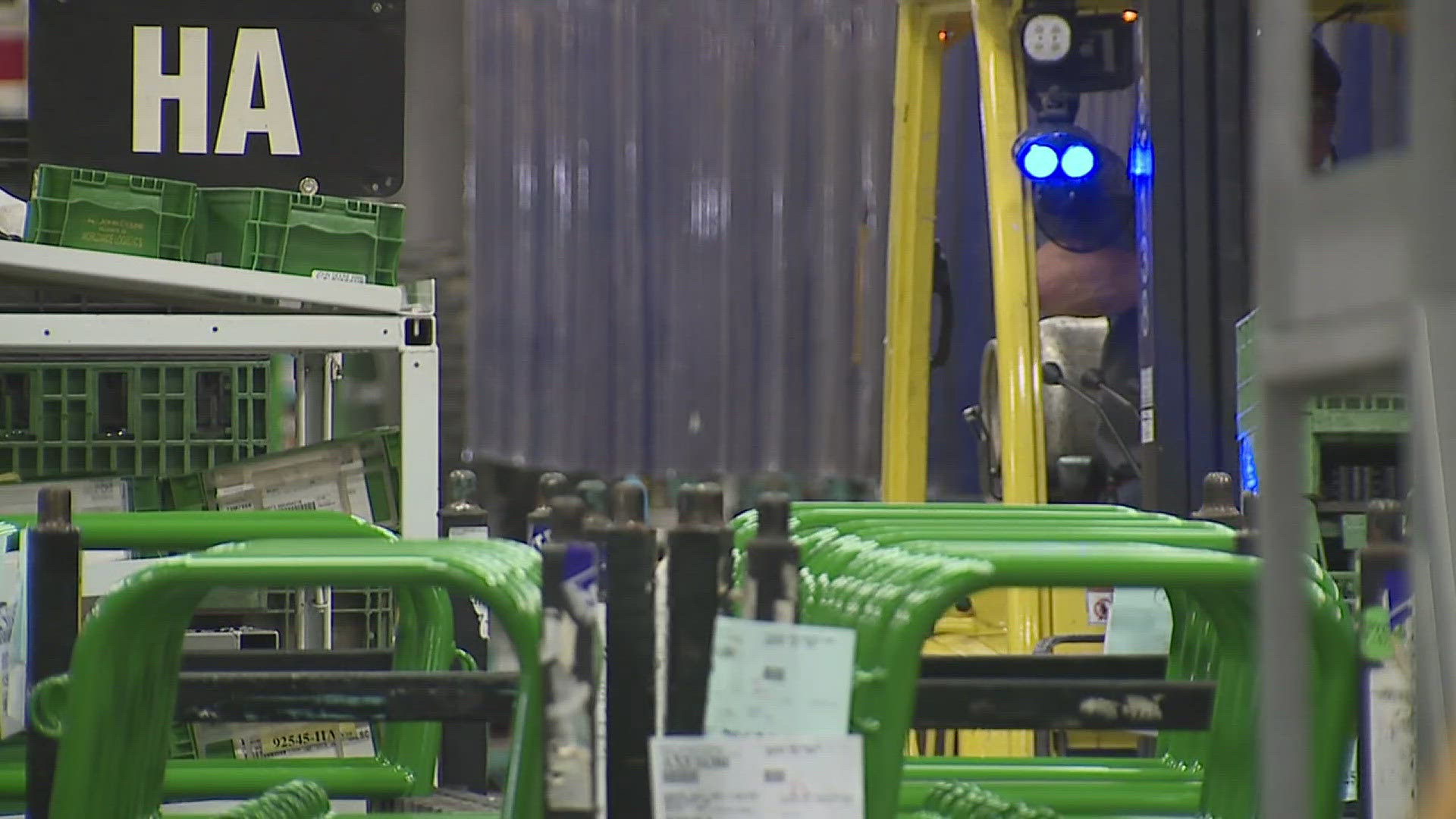MOLINE, Ill. — In the last three months, John Deere has laid off more than 1,000 employees across the company. It most recently includes around 600 production employees across three factories that will be laid off effective Aug. 30.
News 8 also received a letter sent to salaried John Deere employees on May 31, 2024, suggesting layoffs are expected by the end of quarter three of 2024. The company has since confirmed in a statement that "salaried layoffs in the U.S. are expected to occur by the end of July."
Deere has attributed the layoffs to a need to balance its workforce amid the reduced demand for its products.
"I think one of the reasons these seem so large is because we haven't been experiencing a whole lot of layoffs in John Deere," Peter Orazem, an economics professor at Iowa State University said. "This retrenchment isn't unusual in durable goods manufacturing. I mean, they tend to be much more cyclical demand for labor than other sectors of the economy. But, it was unusual that a year ago, John Deere experiencing rising stock prices and high revenues, was already projecting that 2024 was going to be troublesome. And so they were already seeing that the retrenchment in terms of farm incomes was going to have an adverse effect on their business."
In its May second quarter earnings report, the company lowered its full-year profit forecast for a second time as farmers buy fewer tractors and other equipment as they deal with declining prices for their crops. That's despite second quarter earnings beating Wall Street's expectations.
The company is forecasting a $7 billion profit, compared to its net 2023 income of over $10 billion. Its second quarter net sales and revenue were down 12% worldwide.
"They are actually experiencing drops in demand for all three sectors, and that's related to rising interest rates," Orazem said. "Since what John Deere sells are big ticket items, and often are financed by borrowing, the fact that borrowing is more expensive hits firms like John Deere atypically hard."
"Uncertainty has caused a decline in farmer sentiment, and as a result, we are seeing a softer retail environment today than we did just six months ago," Deere's Director of Investor Relations Josh Beal said during the earnings call. "Primary crop margins globally are forecasted to be down, stocks-to-use are expected to be above historical averages, thanks to multiple years of favorable growing conditions are record global yields, used inventories have risen, and persistently high interest rates are impacting purchase decisions ... We do expect incremental demand decline in the back half of 2024. Notably, our production volumes will decline more than demand in the back half as we're taking proactive steps to drive down field inventories."
The agriculture industry is responding to low commodity prices, Orazem said. It's coming off high years and is now retreating.
"Farming is always sort of a boom and bust industry," he said. "Generally, this is considered a down year for agriculture."
In February, the USDA forecast net farm income will fall by $43.1 billion, about a 27% drop. Farm income had previously reached a record high in 2022 of $185.5 billion before decreasing 16%. Crop and animal product sales are also expected to generate $21 billion less this year.
"That's a fairly substantial drop in the economic prospects for the agricultural sector," Orazem said.
At its peak in June 2022, USDA records show corn selling at $7.38 a bushel. In May 2024, it was $4.51 a bushel. That same month in 2022, soybeans were selling at $16.40 a bushel. In May 2024, it dropped to $11.90.
"The things that were driving up commodity prices in 2020 and 2021, all of those things have sort of gone in the opposite direction," Orazem said. "One of the reasons you had the rising worldwide prices was the war in Ukraine, and then there were some problems with harvest elsewhere in the world, and so somebody else's pain is your opportunity. And so the commodity prices rose a lot, but given that a lot of those markets have now rebounded, Ukraine has now found alternative ways of shipping their grains to the world market, and the cutbacks in the sale of Russian oil, now they have new markets for theirs. And so effectively, their production is back to what it was."
At the same time commodity prices are down, input prices, such as fertilizer and fuel are up for farmers.
John Deere is not the only agriculture company letting workers go. In fact, data from the Bureau of Labor Statistics shows machinery manufacturing has seen a decline of about 9,000 employees since the beginning of the year.
More than 200 Bridgestone employees worked their last shift Friday, July 5 at the Des Moines plant. The company cited "demand constraints in the agricultural tire sector" for the reason of its mass layoffs. In April, Senator Tammy Baldwin (D-WI) asked CNH Industrial to reverse course on its decision to layoff about 200 workers from its Racine plant. According to Reuters, the company had announced a restructuring plan last November. It included trimming 5% of its salaried workforce costs and reducing its total workforce expenses by 10% to 15%, citing a slow-down in farm equipment sales in South America.
In fact, data from the Bureau of Labor Statistics shows machinery manufacturing has seen a decline of about 9,000 employees since the beginning of the year.
Orazem believes downturns in agriculture don't last more than a year or two.
Deere & Co. will hold its third quarter earnings call on Thursday, Aug. 15.
Watch more news, weather and sports on News 8's YouTube channel

